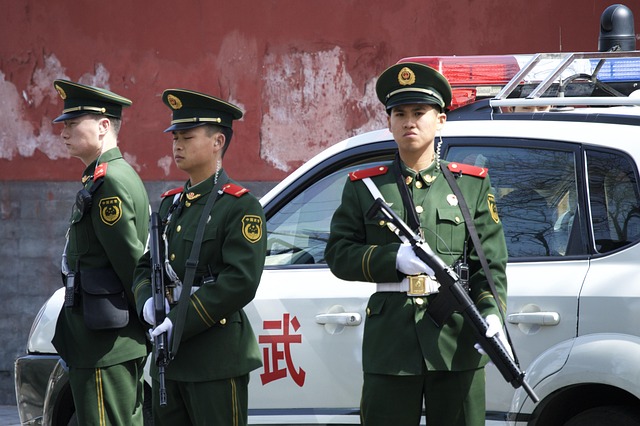Donald Trump’s repeated assertion that the USA is being taken advantage of by its trading partners led to his decision to raise tariffs. While this stance held some credibility in certain instances, his aggressive approach towards China carries potentially catastrophic consequences. Beyond merely crippling China’s economy, a prolonged and severe tariff war, particularly with tariffs exceeding 100%, could conceivably destabilize the nation to the point of fracturing it into multiple separate entities.
China, a vast East Asian nation with the world’s largest population, boasts a diverse landscape and a rich history spanning thousands of years. It’s governed by a unitary socialist state framework under the exclusive leadership of the Chinese Communist Party (CCP). Crucially, China is not considered a democracy in the conventional sense, but rather an authoritarian one-party state led by the CCP. This fundamental characteristic forms the crux of the matter: the CCP’s grip on power is intrinsically linked to its ability to deliver economic prosperity and stability.
A sustained trade and technology war would undoubtedly inflict profound economic pain and challenges on China. Such a conflict would accelerate the existing trend of supply chain diversification away from the country, significantly slow its economic growth, and exacerbate pressing domestic issues. While the Chinese government possesses formidable tools to manage its economy and cushion short-term impacts, a prolonged and escalating conflict would likely impose substantial long-term costs, potentially leading to unprecedented levels of unemployment across China. This, in turn, would severely impede China’s aspirations for continued economic ascendancy on the global stage.
A serious economic downturn poses the most significant existential threat to the CCP’s long-term stability. While the Party has historically demonstrated remarkable capacity for control and has navigated past crises effectively, a sustained and severe downturn could critically test the limits of its “performance legitimacy.” This erosion of public trust could lead to widespread social discontent, forcing the government to increasingly rely on coercive measures to maintain its grip on power. Such escalating reliance on force could trigger widespread riots and internal strife that the government might ultimately find unmanageable.
A widespread popular uprising against the Chinese government would trigger an event with potentially catastrophic and far-reaching consequences, both domestically and internationally. Given the pervasive nature of the CCP’s rule and its vast capabilities for social control, any such uprising would undoubtedly unfold under severe and unpredictable conditions. The CCP maintains a massive and well-equipped security apparatus, including the People’s Liberation Army (PLA) and the People’s Armed Police (PAP), whose primary mission is to protect the Party’s rule and maintain internal stability. These forces are rigorously trained and equipped for large-scale suppression, as chillingly evidenced by historical events like Tiananmen Square in 1989 and ongoing operations in regions such as Xinjiang and Tibet.
Should initial suppression efforts fail to quell an uprising, the government might escalate its use of force, potentially leading to immense casualties. This desperation among protesters, particularly when facing brutal repression, could incite more desperate and violent acts, entrenching a dangerous cycle of conflict. The scale and nature of any uprising would likely vary across China’s diverse regions, influenced by localized grievances, economic disparities, and pre-existing social tensions.
Given China’s pivotal role as the world’s second-largest economy and a major global power, widespread instability within its borders would send severe shockwaves across the entire global economy, impacting trade, and financial markets. International bodies and governments would almost certainly condemn human rights abuses, and some might even call for humanitarian intervention or assistance. However, direct military intervention would remain highly improbable, given China’s formidable military strength and nuclear arsenal. Depending on the scale and violence of the unrest, a significant refugee crisis could emerge, profoundly impacting neighboring countries. Such a crisis would fundamentally alter geopolitical power dynamics, leading to shifts in global alliances and a drastic re-evaluation of international supply chains and dependencies on China.
Ultimately, while the most probable outcome, given the CCP’s extensive control mechanisms, is that any large-scale uprising would eventually be suppressed, the human cost and the toll on social stability would be immense. Limited concessions or reforms might be offered to de-escalate tensions, but without fundamentally altering the CCP’s one-party rule. However, a complete overthrow of the CCP through popular uprising alone, while theoretically possible, would be an extraordinary and historically rare event for a state with such pervasive control. It would necessitate profound internal divisions within the Party and security forces, alongside sustained, widespread, and highly coordinated action across the entire country, which would be incredibly difficult to organize under such a repressive regime. In the long run, such profound instability could lead to a scenario where China fragments into several smaller, independent states, or perhaps five distinct power blocs, each with its own government, and potentially evolving into quasi- or full democracies.





